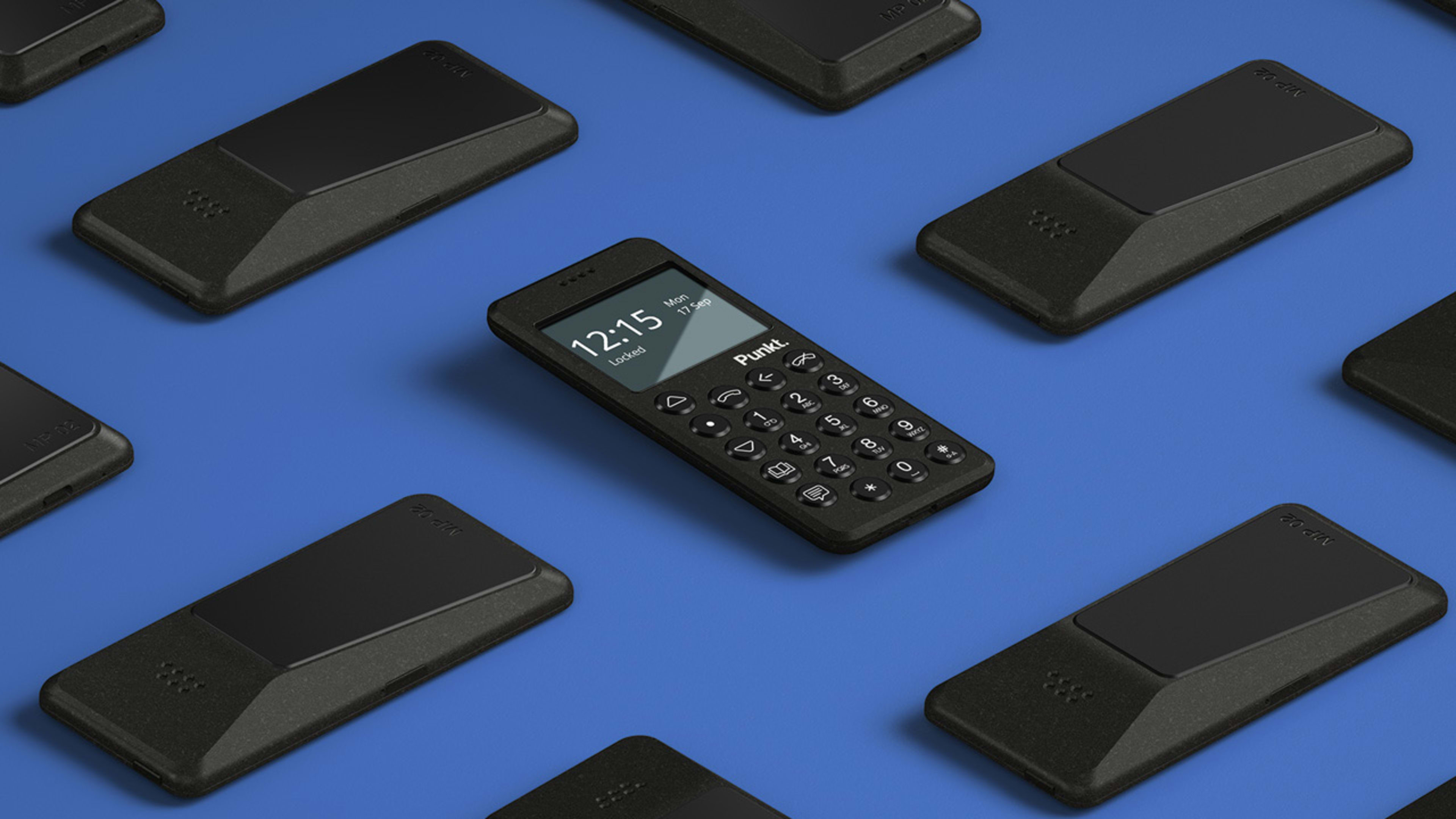Did your 2019 New Year’s resolutions include spending less time with your smartphone? You could activate Apple’s “Screen Time” functionality on your iPhone (or Google’s Android-based equivalent), but that’s kind of like asking your heroin dealer to help you kick. Luckily, a small cottage industry has sprung up within the past several years to get you off your smartphone by actually replacing the physical device itself. Punkt, Palm, Light–these hardware startups are all relying on thoughtful-but-aggressive design to accomplish one goal: unplugging you from the Distraction-Industrial Complex without turning you into a mobile-tech Luddite in the process.
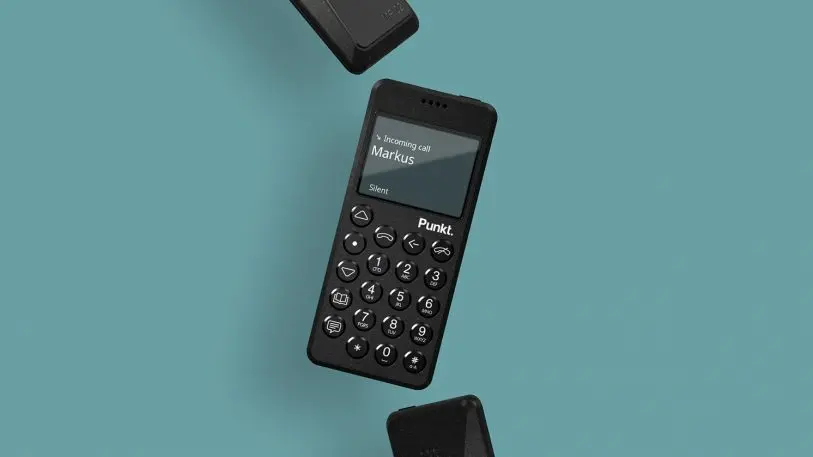
It’s a tall order. Smartphones have enmeshed themselves so deeply into our day-to-day existence over the past decade that putting a physically redesigned phone into someone’s hand means asking them to redesign their lives. At least, that’s what we’ve all been led to believe. If you really do believe that your phone “owns” you, then the solution to that problem must necessarily assume an equally outsized role in your life. And that is what these hardware companies are really selling: the idea of positive self-reinvention (or just self-control), expressed in the form of a conspicuous objet d’art. After all, if what you really cared about was using your smartphone less, you could just… do that, without dropping several hundred dollars on a new gadget. Right?
I wanted to find out, so I embarked on a three-part test. I’d use Punkt and Palm’s devices for a week (Light Phone’s latest model isn’t yet available), and then undergo a week-long “control condition” where I simply used the smartphone I already had, but… less. Tech specs and feature designs wouldn’t be my focus. Instead, I’d “review” these companies’ real value proposition: Would changing my phone materially change my life?
Getting Punkt
I began with the Punkt MP02, a followup to the MP01, which was basically like a Jitterbug dumbphone dressed up in Dieter Rams-ian clothing.
Where the MP01 struck me as more of a virtue-signaling prop than a usable product–the phone equivalent of Instagramming your vegan meal deliveries–the MP02 seemed like Punkt’s attempt at designing something genuinely functional. Granted, it’s still a Swiss-styled dumbphone, if you’re into that sort of thing. (My wife scowled and said it “looks like something the people who made The Terminator thought a cell phone should look like.” Tomato, tomah-to.)
But I was more intrigued by the MP02’s under-the-hood design–specifically, the fact that the phone also works as a 4G wireless hotspot, so you can beam Bona Fide Internets™️ to your laptop or tablet if and when you really need it.
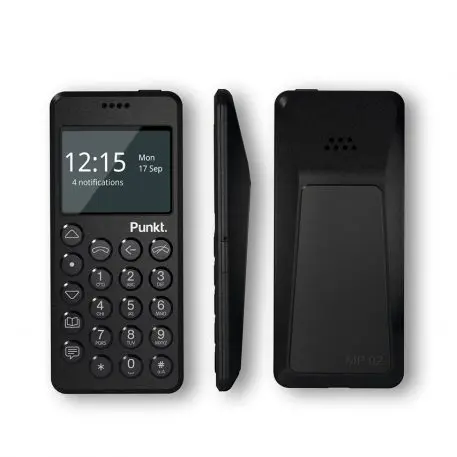
The MP02’s big idea is to force a distinction between two “uses” that our glass rectangles intentionally blur: meaningful utility and empty distraction. You can still talk, text, and get online with the MP02. But that last part is no longer effortless. You have to decide to do it, and deal with the friction of doing it on a separate device. In practice, that means button-punching through a couple of menu layers on the MP02’s teensy display to activate the hotspot, manually connecting to it from your other device (at least at first; after that, it should connect to the MP02 automatically), and then putting the phone down and getting down to whatever business you decided you really needed the internet, right now, to do.
It’s kind of a pain in the ass, and that’s the point. Going through this rigamarole is simply not worth bothering with just so you can dork around on Instagram.
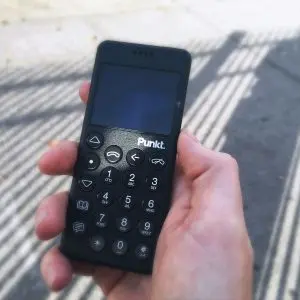
So, after activating my Punkt in an AT&T store in downtown Portland, I shut down the iPhone and began using the MP02 solo.
I instantly felt different. Lighter. Free-er. Me-er! The Punkt felt rugged and capable in my hand, but disappeared into my coat pocket in a way my iPhone never seemed to. When I wasn’t touching the phone, it really felt gone. (I keep using the word “felt” because the experience really was that physically palpable.) The MP02’s paradoxical promise of disconnected connectedness–I had a phone, but also didn’t! I had internet, but also totally none!–seemed to be holding up.
Texting, of course, was ridiculous on this thing. It felt charming, at first, to tap out predictive-text messages like it was 1999 on the Punkt’s numeric keypad. But texting in a clipped, telegraph-esque shorthand while my wife and friends were still using their own rich iMessage “voices” felt strange. Within a day, I stopped bothering. If I wanted to talk to someone, I actually called.
This felt strange at first, too, but I can’t deny that it had an unexpected impact on the quality of my conversations. One day, my wife iMessaged me at work (I could still send and receive them on my laptop) that she was having a tough day, punctuated with her usual self-deprecating GIF. I pinged back in my usual way, too (heart emoji)—but then saw the Punkt sitting on my desk and thought, why not give her a call? As soon as I heard her voice, I could tell that she was feeling much lower than the GIF implied. Our call lasted only a few minutes, but I knew I wouldn’t have made it if I hadn’t been nudged to by the Punkt. I told her I was glad I did, and she said she was too.

Granted, using the MP02 wasn’t all Hallmark cards. Calling multiple times from the grocery store with minor questions, instead of texting, got my spouse a bit exasperated. But I couldn’t deny that the Punkt was, in fact, “redesigning” certain ways of communicating that I had been doing on autopilot–or doing not at all. I made more phone calls to loved ones with the Punkt than I did without it, and not once did I wish I had texted instead. I didn’t even have to give up iMessaging–I could still do that from my laptop at work or my tablet on the couch at home. But in the same way that the Punkt’s design forced me to put specific temporal or physical “edges” on my mobile internet use, its texting limitations did the same thing for my conversations–which sharpened and sometimes deepened them.
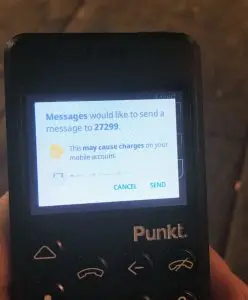
I have to give Punkt credit: The MP02’s aggressive design constraints clearly helped to snap me out of some unthinking habits. But in just a matter of days, those same constraints felt like Procrustean-bed solutions that chopped away more than they enabled. Unlike Palm or Light Phone, Punkt wants its device to replace your smartphone, not just act as a secondary “sidekick” to it–and you’ve got to respect that kind of uncompromising commitment to a design principle. I genuinely hoped Punkt would make me chuck my iPhone into a desk drawer, but in the end I felt so frustrated that I did exactly that with the MP02.
Still, that may say more about me than about the device. The MP02’s tagline (“the best of both worlds”) may be overselling its capabilities, but there is no hedging or namby-pambiness in its value proposition: namely, placing a bunch of no-nonsense physical barriers between you and mobile distraction. This is a device that isn’t designed so much for mindful disconnection as it is for open rebellion against everything that smartphones have become. Using it is about as subtle as going on a crash paleo diet. I couldn’t see myself making that commitment in the long-term, but it did open my eyes.
Next week, I’ll report on what I learned using the Palm–a delicate, gentle little device that’s pretty much a complete 180 from Punkt’s hardcore approach to smartphone detoxing. Stay tuned.
Recognize your brand’s excellence by applying to this year’s Brands That Matter Awards before the early-rate deadline, May 3.
